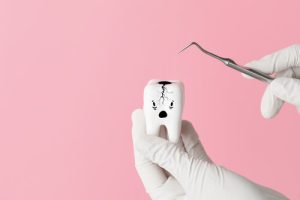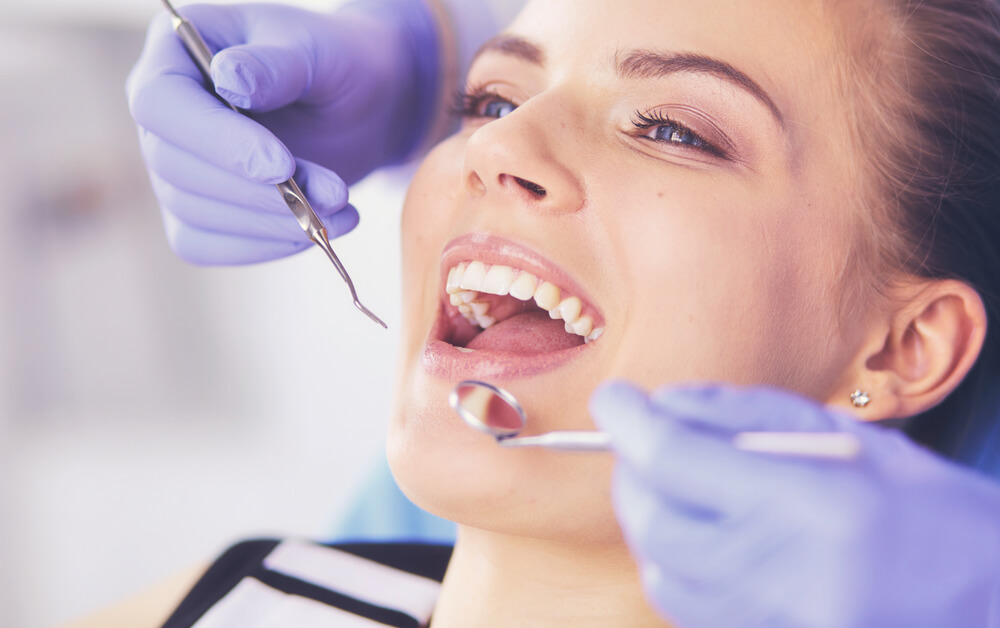Have you ever wondered, “Why does dental cleaning hurt so much?” If so, you’re not alone. Many people share this question and a sense of dread when it comes to their semi-annual dental appointments. The discomfort associated with dental cleaning can often discourage individuals from maintaining regular dental hygiene appointments, leading to more significant problems down the line. The reality is that the pain during dental cleaning is typically a result of various factors, including sensitive teeth, gum condition, and the techniques used during the procedure. Let’s delve into the reasons behind this common phenomenon to help you better understand and hopefully alleviate some anxiety surrounding your next dental visit.
Understand What Causes Dental Cleaning Pain
Several factors can contribute to the discomfort or pain you might experience during a dental cleaning:
- Gum Health: If your gums are inflamed or infected (gingivitis or periodontitis), the cleaning process can cause discomfort or pain. That’s because the dental hygienist has to clean around and below the gum line to remove plaque and tartar build-up.
- Tooth Sensitivity: Some people have naturally sensitive teeth due to thinner enamel or exposed tooth roots. For these individuals, the cleaning process, which often involves temperature changes and pressure, can be uncomfortable.
- Previous Dental Work: If you have fillings, crowns, or other dental work, these areas may be sensitive to the cleaning process.
- Lack of Regular Cleanings: If it’s been a long time since your last cleaning, you may have more plaque and tartar build-up that requires a more intensive cleaning process, which can be uncomfortable.
- Dental Anxiety: For some people, the discomfort is not just physical. Dental anxiety can heighten the sense of pain or discomfort. If you’re tense or anxious, you might perceive the cleaning as more painful than it actually is.
- The Hygienist’s Technique: Some discomfort can be attributed to the hygienist’s technique. A skilled hygienist will be able to clean your teeth thoroughly with as little discomfort as possible. If you’re consistently experiencing pain during your cleanings, it might be worth discussing the technique with your hygienist or looking for a new one.
Understanding these factors can help you address the issue with your dentist or hygienist and work toward a more comfortable dental cleaning experience.
 Deep cleaning: Advantages and disadvantages
Deep cleaning: Advantages and disadvantages
Deep dental cleaning, also known as scaling and root planing, is a procedure that is used to treat gum disease before it becomes severe. Here are some of the advantages and disadvantages associated with this process:
Advantages of Deep Cleaning:
- Gum Disease Treatment: Deep cleaning is the most effective way to treat periodontal disease in its early stages. It removes plaque and tartar below the gum line, where regular brushing and flossing can’t reach.
- Prevention of Tooth Loss: By treating sore and bleeding gums early, deep cleaning can prevent the loss of teeth. Untreated gum disease can lead to the breakdown of the bone that supports your teeth, eventually leading to tooth loss.
- Bad Breath Improvement: By removing the bacteria, plaque, and tartar that cause gum disease, deep cleaning can also help improve persistent bad breath, which is often a symptom of gum disease.
- Overall Health: There is a connection between gum disease and other health conditions like heart disease, diabetes, and respiratory disease. By treating gum disease, you’re also helping to improve your overall health.
Disadvantages of Deep Cleaning:
- Discomfort: The procedure can cause discomfort during and after treatment. Your dentist can use a local anesthetic to minimize discomfort during the treatment, and over-the-counter pain relievers can usually manage any post-treatment pain.
- Tooth Sensitivity: Yes, teeth cleaning hurt. Deep cleaning can lead to temporary tooth sensitivity, especially to hot and cold temperatures. This is because the process may expose the root surfaces of the teeth.
 Time-Consuming: Depending on the extent of the gum disease, the deep cleaning process can take several visits to the dentist.
Time-Consuming: Depending on the extent of the gum disease, the deep cleaning process can take several visits to the dentist.- Cost: Deep teeth cleanings are more expensive than regular cleanings. Some dental insurance plans may not cover the full cost of the procedure.
- Temporary Bleeding: After the procedure, you may experience slight bleeding when brushing or flossing. This should improve as your gums heal.
Remember, each person’s experience will be unique based on their oral health, pain tolerance, and the severity of their gum disease. If you have concerns about the process, talk to your dentist, who can explain the procedure in more detail and discuss the potential benefits and drawbacks in your specific case.
Learn About Different Techniques to Improve Comfort During Cleaning
Dental cleanings can sometimes be uncomfortable, but several techniques and technologies can improve comfort during the process. Here’s a look at some of the options available:
- Topical Anesthetics: These can be applied to your gums to numb them before the cleaning starts. This can help reduce any discomfort from the cleaning process, particularly for those with sensitive gums.
- Local Anesthesia: For deep cleanings or severe sensitivity, your dentist might suggest local anesthesia to numb a larger mouth area.
- Sedation Dentistry: This technique uses medication to help patients relax during dental procedures. It ranges from minimal sedation, where you’re awake but relaxed, to general anesthesia, where you’re completely unconscious.
- Ultrasonic Scaling: Rather than using manual tools to scrape away plaque and tartar, some dental hygienists use ultrasonic scaling devices. These sound waves break up plaque and tartar, which can be less uncomfortable than traditional scaling.
- Proper Brushing and Flossing: Practice good oral hygiene. Regular and correct brushing and flossing can make your cleanings less uncomfortable. The cleaner you keep your teeth, the less work your hygienist will have to do, reducing the potential for discomfort.
- Regular Cleanings: Regular dental cleanings can prevent the build-up of plaque and tartar, making future cleanings less uncomfortable. It is usually recommended to have a dental cleaning every six months.
- Relaxation Techniques: Techniques like deep breathing or listening to calming music can also help reduce discomfort. Some dentists also offer distractions like televisions or virtual reality goggles.
- Open Communication: Let your hygienist know if you’re uncomfortable. They can adjust their technique or take breaks if needed.
Everyone’s pain tolerance is different; what works for one person may not work for another. Discuss your concerns with your dentist or dental hygienist; they can help you find a solution that works for you.
Different Types of Anesthesia Used in Dental Cleanings
Depending on the type of dental cleaning or procedure being performed, various levels and types of anesthesia can be used to ensure a patient’s comfort. Here are some commonly used anesthesia options during dental cleanings and procedures:
- Topical Anesthesia: This is a numbing gel or ointment applied directly to a specific mouth area, such as the gums or the inside of the cheek. It’s typically used before a local anesthetic is injected to numb the needle’s insertion area, reducing any discomfort from the injection.
 Local Anesthesia: Local anesthesia, such as Lidocaine, is dentistry’s most commonly used form of anesthesia. It’s injected into a specific area of the mouth to block the nerves that sense or transmit pain, numbing the site where the dental work will be done. Local anesthesia is typically used for procedures like fillings, crowns, or deep cleanings.
Local Anesthesia: Local anesthesia, such as Lidocaine, is dentistry’s most commonly used form of anesthesia. It’s injected into a specific area of the mouth to block the nerves that sense or transmit pain, numbing the site where the dental work will be done. Local anesthesia is typically used for procedures like fillings, crowns, or deep cleanings.- Nitrous Oxide: Also known as laughing gas, nitrous oxide is a mild sedative that’s inhaled through a mask placed over the nose. It helps patients relax during procedures but doesn’t put them to sleep. The effects wear off quickly once the mask is removed.
- Oral Conscious Sedation: This involves taking a prescription medication, such as Halcion or Valium, before the procedure. It makes you drowsy and relaxed but still awake and able to respond to commands.
- Intravenous (IV) Sedation: This is a moderate type of sedation that’s administered directly into a vein. It takes effect more quickly than oral sedation, and the level of sedation can be adjusted during the procedure.
- General Anesthesia: This type of anesthesia is used for complex procedures or for patients with severe anxiety or special needs. It renders you completely unconscious during the treatment. It’s more commonly used for oral surgery procedures rather than regular dental cleanings.
Each type of anesthesia is safe when administered properly, but each has its own risks and side effects. Your dentist will consider your overall health, the nature and duration of the procedure, and your comfort level when deciding which type of anesthesia to use. Always communicate your concerns or fears to your dentist to ensure the most comfortable experience possible.
References:
https://www.medicinenet.com/is_dental_cleaning_painful/article.htm
https://askthedentist.com/how-to-make-teeth-cleanings-less-painful/
https://www.healthline.com/health/deep-cleaning-teeth
https://www.colgate.com/en-us/oral-health/tooth-sensitivity/sensitive-teeth-after-cleaning



